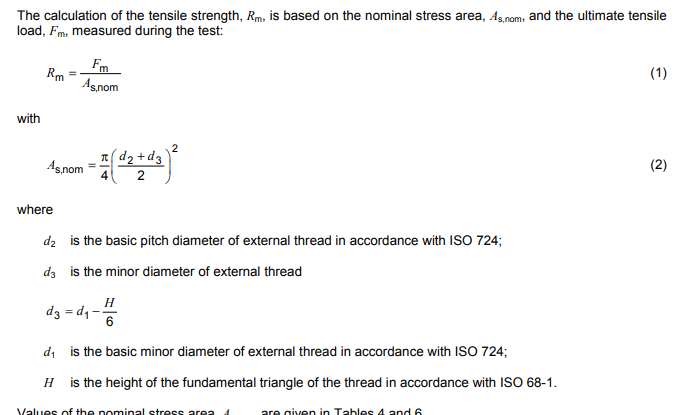-
1
- #1
Prometheus21
Mechanical
- Apr 22, 2023
- 107
Hello everyone,
The industrial gas industry in Europe uses the whitworth thread extensively, and I'm wondering if any of you have any experience and input with these threads and strength calculations. The thread can be your typical BSP "G" thread per ISO 228-1, or individual gas standard threads (W21,8-1/144'' per DIN 477, or W21,7-1/14'' per UNI 11144 ect.)
The typical metric thread with the 60° thread (apex) angle has the normal nominal stress area defined per ISO 898-1, see attached image.

1. Would the nominal stress area notably change with a 55° thread angle? The thread is still based on a fundamental triangle, but the peaks are rounded.
2. From experience the Whitworth thread is well suited for shock loads, (e.g. pressure regulator connected to a cylinder valve) often attributed to the rounding. Do you know of any research or tech-briefs backing this up?
Thank you for any input you may have!
The industrial gas industry in Europe uses the whitworth thread extensively, and I'm wondering if any of you have any experience and input with these threads and strength calculations. The thread can be your typical BSP "G" thread per ISO 228-1, or individual gas standard threads (W21,8-1/144'' per DIN 477, or W21,7-1/14'' per UNI 11144 ect.)
The typical metric thread with the 60° thread (apex) angle has the normal nominal stress area defined per ISO 898-1, see attached image.

1. Would the nominal stress area notably change with a 55° thread angle? The thread is still based on a fundamental triangle, but the peaks are rounded.
2. From experience the Whitworth thread is well suited for shock loads, (e.g. pressure regulator connected to a cylinder valve) often attributed to the rounding. Do you know of any research or tech-briefs backing this up?
Thank you for any input you may have!
